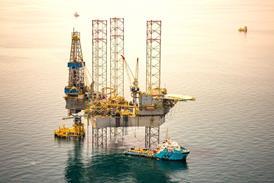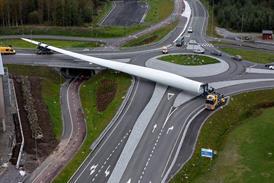As part of its 50th anniversary celebrations, the Project Management Institute has named Chernobyl’s New Safe Confinement (NSC) as one of the 50 most influential projects of the past 50 years.

Financed by the European Bank for Reconstruction and Development (EBRD) as well as 45 donor nations, the NSC project took 22 years to complete and was handed over to the Ukrainian authorities in July 2019.
It involved covering and sealing off Reactor Unit 4 of the Chernobyl Nuclear Power Plant in Ukraine, which was destroyed in a steam explosion in April 1986.
The total cost of the Shelter Implementation Plan for Chernobyl, which entailed more than 300 separate projects including the NSC, was USD2.3 billion.
The NSC is a huge, USD1.6 billion arch that was constructed in two parts and slid into place over the reactor in 2016. It replaced a concrete covering that had been built quickly during the seven months following the disaster and had become unstable.
The arch weighs 36,000 tonnes; it is 105 m tall, 165 m long and spans 256 m. It was designed by a Bechtel-led consortium and constructed by Novarka – a joint venture between French companies Bouygues Travaux Publics and Vinci Construction.
“Completing the NSC took an all-in effort by the whole team,” said Bechtel project manager Oscar McNeil. “It required international cooperation and ingenuity to overcome the challenges presented by radiation and the environment around the plant, not to mention the Ukrainian winters.”
Construction of each half of the structure involved three jack-up operations, so that it was in effect built from the top down. This allowed construction to take place at a lower height. Building the arch in two parts, meanwhile, reduced the jack-up capacity required, thus lowering the cost of the job.
Heavy lift and transportation specialist Mammoet developed a customised jacking system for the project. Strand jacks were housed in special containers placed on top of the jacking tower sections to allow easy removal of the strand jacks for scheduled maintenance while jacking towers were relocated.
The company also developed a bespoke software system to allow up to 60 strand jacks to be used simultaneously. Cameras in each container monitored the reels and jacks, while a customised method of protecting the strand wires against the elements minimised potential downtime.
In order to minimise exposure of workers to radiation, the arch was built 300 m away from the reactor site. Once finished, the two halves of the structure were joined together and the complete NSC was then slid into its final position on rails.
The NSC is expected to remain in place, sealing out the elements and containing radioactivity, for 100 years – by which time it is hoped that radiation levels will have dropped sufficiently to allow demolition of the reactor building.
















